As a teacher of 4th grade for over 20 years, I can tell you that long division is easily the most challenging 4th grade math calculation your students will learn. It involves a complicated (sometimes confusing) algorithm that requires a strong fluency of basic facts for not just for division, but also multiplication, and subtraction, too. Mastering the steps for student requires a lot of practice, repetition, and perseverance. To teach it takes preparation and a lot of patience.
Here are some tips that will hopefully help your students become long division dynamo’s in to time.
Want more like that? Download this product from my TpT store which uses differentiated worksheets and math notebook pages to introduce this partial quotient long division.
To build on a skill learned with multiplication, I always teach my students how to relate area models to long division.
Here’s how the area model would look for a problem solved in this way:
Keeping work neat is essential in doing math calculation, right? For this reason, I always use grids to help students both to keep their work neat and to guide the process in the early learning. As students gain confidence, I pull these scaffolds away and let students just work the problem in a blank space. Sometimes I even allow students to choose when they are ready to try the non-scaffold answer document!
Of all of the work I send home for homework, this is the one that will most commonly come back with a parent note/e-mail asking, “What is this?” or saying, “I don’t know how to help my child with this.” I have even spotted Facebook posts from my parents with cynical comments about not understanding this new “common core math” and questioning why we aren’t teaching it the “old-fashioned way”, etc… I’d recommend against sending it as homework, at least until you are confident students can do it totally independently.
Check out this FREE product I created to go with these Learn Zillion videos.
This is a tough skill. Go slow. If students are doing it along with you, they will often fool you into thinking, “they’ve got this,” but then when they start working independently, you discover quickly, “they don’t got this.” Do examples with them until you think they have it, and then do a few more. Trust me on this.
It is a great way to engage students right at the start, and it acts as a great assessment tool for me to see who needs extra help. (See my Kahoot game links below.
- Long Division Using the Partial Quotient Method #1
- Long Division Using the Partial Quotient Method #2
- Long Division with 2 Digit Dividend and 1 Digit Quotients
- Divide and Conquer: 2 Digit Dividends and 1 Digit Quotients
- Long Division with 2 Digit Dividends and 1 Digit Quotients (Cute Baby Edition)
- Long Division with 2 Digit Dividend and 2 Digit Quotients
- Long Division with 2 Digit Dividend and 2 Digit Quotients (Dance Edition)
- Long Division with 3 Digit Dividends
- Long Division with 4 Digit Dividends
I have also created many task card setsthat allow students to get up and move as well as to self-check. Students enjoy this, and I appreciate the fact that because they can self-check, I am freed up to help the students who need it.
The kids love solving the problems to reveal the jokes, and you’ll love how easy it is to check for understanding.
In the end, teaching long division can be daunting and even exhausting. If you follow these tips, however, I think you’ll find that your students will really enjoy dividing in this way. As your students gain confidence and competency with the skill, you will feel a tremendous sense of pride from a job well done.
Good luck and happy teaching!
~Shane


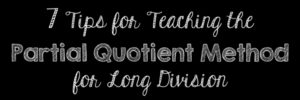
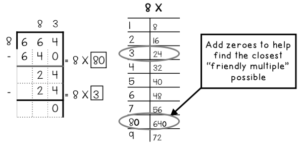
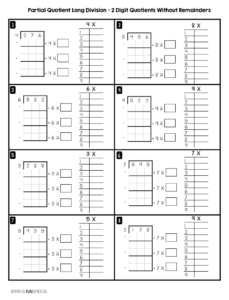

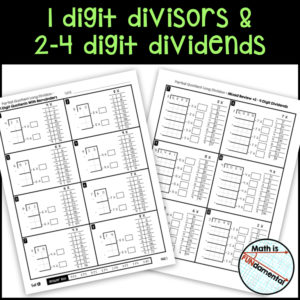
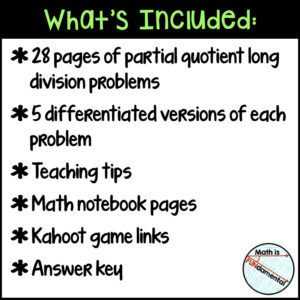


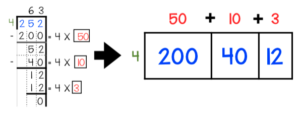

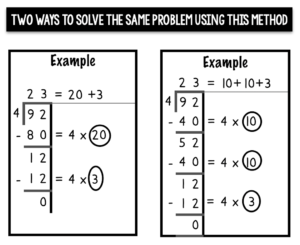
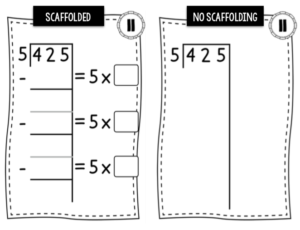


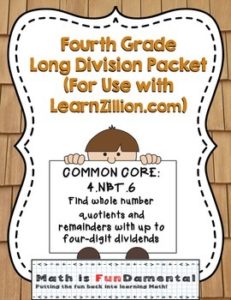



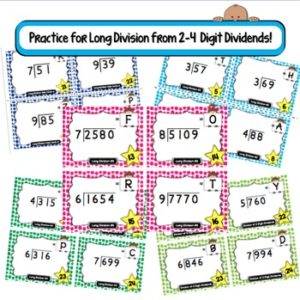
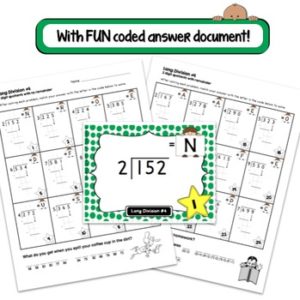

Pingback: Kahoot Games to Practice the Standard Method for Long Division - Math is Fundamental